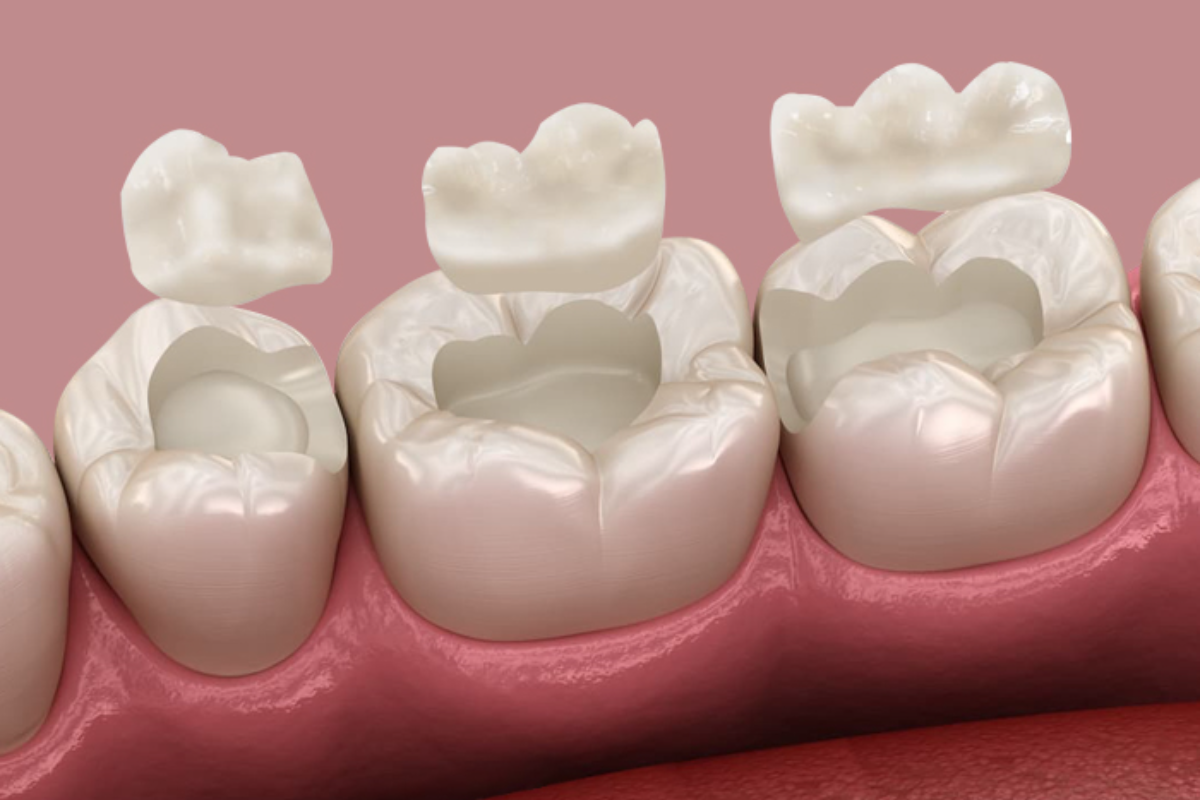The contemporary dental practice offers several restoration procedures to restore tooth damage. Tooth restoration entails inlays and onlays in cases where the patients require something more than fillings but something less than crowns. Strong material restorations offer aesthetic and functional value. Most of the patients prefer tooth-colored fillings near you for a natural appearance that conforms to their smile.
What Are Inlays and Onlays?
Inlays and onlays are custom pieces that are utilized to repair moderate tooth damage. They are applied when a cavity is too large for a filling but not severe enough for a crown. An inlay is placed within the grooves of the tooth, while an onlay goes further to cover one or more of the tooth’s outer surfaces. Both will support the tooth and restore its form and function.
Applications of Inlays and Onlays
These restorations are used in several situations. Dentists use them to treat decay that occurs between the cusps of the teeth or to fix cracked or broken teeth. The applications of inlays and onlays also include replacing large, worn-out fillings or supporting weakened teeth after root canal treatment.
These materials are usually placed on the back teeth, where chewing pressure is highest. Since inlays and onlays are more durable than regular fillings, they allow more of the natural tooth structure to be left intact. They also minimize the chances of future damage or infection if properly placed.
Differences Between Inlays and Onlays
While both serve similar purposes, the key differences between inlays and onlays lie in how much of the tooth they cover. Inlays are placed in the centre of the tooth’s biting surface. They do not reach the edges or cusps. Onlays, on the other hand, cover a larger area. They extend over the cusps, protecting the sides of the tooth.
Choosing between an inlay or an onlay depends on the size and location of the damage. Onlays are often called “partial crowns” because they offer more coverage than inlays. Understanding the difference helps patients work with their dentist to choose the best option.
Material Options for Inlays and Onlays
There are several types of materials used to make inlays and onlays. Each has features that suit different dental needs. The most commonly used materials include
- Porcelain: Matches the colour of natural teeth and resists stains.
- Composite Resin: Offers good appearance and moderate durability.
- Gold: Known for strength and long-lasting wear.
Each of these materials has different levels of strength, appearance, and cost. Dentists select the best option depending on where the restoration will be placed and the patient’s personal preferences.
Porcelain Inlays and Onlays
Porcelain is often used because it blends well with natural teeth. These inlays and onlays are ideal for people who want their restorations to be nearly invisible. Porcelain is durable and does not stain easily, making it a good option for front teeth and visible areas. Dentists also like porcelain because it can be shaped accurately to fit the tooth perfectly.
Gold Inlays and Onlays
Gold has been used in dental treatments for many decades. Though not tooth-coloured, it remains one of the strongest and most reliable materials. Gold inlays and onlays can last many years without breaking or wearing down. They are best suited for back teeth, where strength is more important than looks. Patients who choose gold value its proven history and strong protection.
Composite Resin Inlays and Onlays
Composite resin is a more reasonable choice compared to porcelain or gold. It matches the colour of natural teeth and provides decent strength. Composite is often used when a balance between cost and appearance is needed. However, it may wear down faster than other materials and is more likely to stain over time.
Advantages of Inlays and Onlays
Inlays and onlays have many benefits that make them a smart choice for dental repair. Key benefits of inlays and onlays include
- Preservation of more healthy tooth structure
- A stronger seal compared to regular fillings
- Long-lasting durability
- Better chewing function
- Improved appearance when tooth-coloured materials are used
These restorations are especially useful for patients who want something stronger and more natural-looking than traditional fillings.
Choosing the Right Material for You
Selecting the best material for an inlay or onlay depends on several factors. These include the location of the tooth, how visible it is when you smile, and your budget. For example, porcelain is popular for visible areas, while gold is often chosen for molars. A dentist can help choose the right material by evaluating the patient’s specific dental condition and goals.
How Long Do Inlays and Onlays Last?
With good care, inlays and onlays can last for many years. On average, they may last 10 to 20 years, depending on the material and oral hygiene. Brushing, flossing, and regular dental checkups all help extend their life. Porcelain and gold tend to last longer than composite resin, but all three materials offer good performance when maintained properly.
Are You a Good Candidate?
Not everyone needs a crown or can rely on a filling alone. Inlays and onlays are ideal for those with moderate tooth damage. They are often recommended when a filling would be too weak, but a crown would be too aggressive. Patients with strong oral hygiene habits and healthy gums are generally good candidates. Visiting a dental clinic in Millwoods can help determine if this treatment fits your dental needs.
Speak With Our Team for a Personalized Solution
Choosing the right dental restoration starts with the right care. At Dental Elements, we are proud to offer high-quality treatments in a modern, patient-focused setting. If you are searching for a trusted dentist in Millwoods, our team is here to support you with expert care and custom solutions. Contact us today to book a consultation and learn how inlays, onlays, and other restorative services can improve your smile and protect your oral health.

